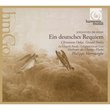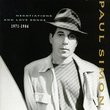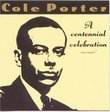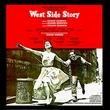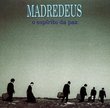| All Artists: Antoine Sicot, Jerome Casalonga, Ensemble Organum Title: Messe de Notre Dame (Guillaume de Machaut)/ Ensemble Organum (Marcel Peres) Members Wishing: 3 Total Copies: 0 Label: Harmonia Mundi Fr. Release Date: 1/10/1997 Album Type: Import Genre: Classical Styles: Opera & Classical Vocal, Historical Periods, Early Music Number of Discs: 1 SwapaCD Credits: 1 UPC: 794881358823 |
Search - Antoine Sicot, Jerome Casalonga, Ensemble Organum :: Messe de Notre Dame (Guillaume de Machaut)/ Ensemble Organum (Marcel Peres)
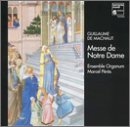 | Antoine Sicot, Jerome Casalonga, Ensemble Organum Messe de Notre Dame (Guillaume de Machaut)/ Ensemble Organum (Marcel Peres) Genre: Classical
Although Machaut's oft-recorded Mass is probably the best known work of medieval music, Marcel Pérès and his Ensemble Organum make you literally hear it for the first time. For starters, the movements are perfo... more » |
Larger Image |
CD DetailsSynopsis
Amazon.com Although Machaut's oft-recorded Mass is probably the best known work of medieval music, Marcel Pérès and his Ensemble Organum make you literally hear it for the first time. For starters, the movements are performed in a liturgical context, with appropriate plainsong insertions. The vocal lines, in turn, are ornamented with boisterous scoops, Bob Dylan-like slides, and decorations that will sound strange to modern ears. Yet the ornaments illuminate the work's celebratory aspects, and brings Machaut's quirky imagination into firmer focus than more conservative recordings. Pérès is to Machaut as Schnabel was to Beethoven. --Jed Distler Similar CDsSimilarly Requested CDs
|
CD ReviewsThe Missing Link Between Paris and Tunis! Christopher Forbes | Brooklyn,, NY | 04/05/2004 (5 out of 5 stars) "The Early Music field is full of schisms. What once seemed like a monolithic movement, dedicated to challenging the hegemony of 18th and 19th century classical music in the concert hall has turned into a vigorous section of the musical market in its own right. And, as a field that is equal parts musician driven and musicological, it is inevitable that there should develop schisms around points of interpretation. This particularly CD is the product of the very well-researched theories of Marcel Peres. Peres, taking his cues from the historical record, has created a performance of Machaut's historically important and very beautiful Mass and restored the art of ornamentation, microtonal inflection, just intonation, and rhythmic flexibility that reflects at least one of the dominant vocal styles prevalent in 14th century church music. The results have been controversial ever since the release of this CD in 1996.Machaut's Mass is perhaps the most famous product of the late Middle Ages. It is the first complete setting of the Ordinary of the Mass ever produced by one composer. What is not clear is whether the work was just a collection of separate Mass movements that Machaut assembled for an occasion, or if they were originally intended to be performed together. Machaut uses a wide variety of polyphonic techniques in this work, from long melismatic textures to almost chordal writing. He ingeniously varied his given material, Gregorian chant which is placed in the lowest voice. Machaut shows a new concern for the combination of vocal textures that was not present in the works of earlier polyphonic composers. In a deeply felt performance, this work never fails to sound ancient, and surprisingly fresh, no matter what the approach taken by the ensemble.The approach toward this work is what distinguishes the present disc from its competition. The best renditions that I own, the Taverner Consort on EMI and the Hilliard Ensemble on Harmonia Mundi take a very respectful and conservative approach to the score. There are differences between them in details, as source material in this work can vary wildly. But both sing exquisitely and with an ear for accurate just intonation. Both also take the work at a good clip, giving the piece a forward drive and rhythmic intensity that is wonderful to hear. This recording is nothing like them!Peres approaches the work from almost as an ethnomusicologist. Vocal tone is nasal and throat and chest driven. It has the tone of an Arabic muezzin chanting the call for prayer. In addition, the score is used as a framework for extensive improvisatory ornamentation, often with scoops, vibratory ornament and microtonal inflections. The result is much closer to the sound of the choral music of the Caucasus, the singing in Orthodox Churches and most especially, the chants of Sufis in Moorish Spain. This concept can be justified I think in the historical literature and musicologically. Moorish influence on Western Europe cannot be doubted, particularly in architecture and in instrument development. Instruments that make their first appearance in the Middle Ages, like the lute and the viol almost certainly came into Europe via Spain and North Africa. The Arabic influence on education and the arts is widely acknowledged. Why should it not be the same in the field of music? I believe that Ensemble Organum makes an impressive case for the school of thought that believes in Islamic influence on the rise of polyphony in the west. Of course, all of this would be moot if the CD were poorly executed. The good news is that this CD is a spectacular rendition of the Machaut work. Peres and company choose to present the piece in its greater liturgical context, alternating the polyphonic Ordinary with plainchant sections from a set of Marian Propers. The approach to the chant is similarly ornamented and microtonal. Setting the Mass in its context is not new, Andrew Parrott pioneered this in the 1980s. But in the present CD, the polyphony comes naturally out of the plainchant texture rather than sounding like the intrusion of a later age, as it can with a more traditional performance. Also, given the high emphasis on ornament, the work could sound like a fantasy on Machaut rather than an interpretation on the work. Comparative listens to a more conservative rendering indicate that Peres and Ensemble are fairly faithful to the original scaffolding. This is clearly Machaut's work, not the performers. But the rendering is a fascinating glimpse into what the composer may have actually intended with his groundbreaking work.The sound of the CD may be difficult for those used to a more contemplative reading of the Mass like the Hilliard's. The vocal quality too will take some more traditional lovers of Medieval music back. But I find the spectacular ornamentation of moments like the In Terra Pax, which is breathtaking, to more than make up for any weaknesses in the disc. And the vocal quality is no stranger than that of the Bulgarian Woman's Choir. I would suggest however, that if you are not familiar with the Machaut Mass, that you get another recording, preferably the Taverner Consort or the Hilliard Ensemble in addition to this one. The comparative approach on this work is essential to understanding both the framework of the Machaut piece and the incredible power and freedom of the present recording." Authentic, intriguing, and downright creepy! Justin Weaver | 05/15/2000 (5 out of 5 stars) "Let me start with the bad and move quickly to the good. Ok, so if you've had the good fortune of meeting this terrific mass before in another recording, you probably will find this recording completely off-the-wall, even if you can convince your conscious mind to accept it as 'authentic'. Microtonal inflections, forced nasality, voice-breaks, trills, etc are heaped onto the skeleton of Machaut's masterpiece, following the most up-to-date scholarship on 14th century practice. You might also complain that the gorgeous polyphony is broken up by plainchaint liturgy -- something you may not be buying this CD for... But (moving to the positives), in spite of and indeed BECAUSE of (much of) this, I find this CD one of the most compelling in my entire collection of music from any period. It strikes me as immensely exotic and fresh and therefore relevent in the extreme...it's the sort of music that hits you in the face with the incredible change in Western aesthetics that accompanies the march of centuries and renders our contemporary ears ill-suited to immediately grasp the world of the 14th century polyphonic mass.The Kyrie is downright creepy-- just try listening to it on high volume in a pitch-black room sometime! -- there are moments where consonance and dissonance seem to pull in all directions at once through the slippery intertwining lines whose extensive ornamentation render them bone-chillingly 'antique' (like tombstones in an old cemetery are 'antique')... the piece has the austerity of a Gothic cathedral at midnight... but then there are moments of radiant sunlight too, passing 'dissonances' (future tertian consonances) that seem almost moments of clarity. I will confess, I'd rather skip the liturgy and have the polyphony stand by itself as an art piece but acknowledge this may be a slap-in-the-face to Machaut's inherently religious intents. Highly recommended to listeners of all persuasions!" No, friends, it isn't plausible. Giordano Bruno | Wherever I am, I am. | 04/30/2007 (3 out of 5 stars) "The long review by Christopher Forbes above makes a very good case for taking this performance at face value in terms of scholarship, but certain facts are asserted as proven that are in fact quite in question. The influence of North African (Islamic? Arabic? Moorish?) music on Medieval Europe, for instance. Most people who argue this case seem to me to project modern Arabic music backwards 1200 years in time and assume that it sounded much the same; really we have no idea how it sounded. The North African origin of the bowed string instruments that became the vielle, viol, and violin is also very uncertain; much has been made of peg-boxes versus peg-disks, and as good a case can be made for a Nordic ancestry of the vielle as for a Moorish.
But big problem, however, with Ensemble Organum's hyper-ornamentation is that it makes no sense in terms of the developments of ars nova notation and contemporary treatments (in words and notes) of prolation. How could you get from Machaut a la Peres to Ars Subtilior composers like Ciconia, let alone Dufay and Ockeghem? And are we to believe that France was more Islamicized than Italy, half of which had been under North African rule for centuries before the Normans? Why would the trecento Italian composers like Landini be so obviously on a different course? Okay, forgetting my musicological doubts, I have to say I find this version of Machaut less interesting than some other reviewers, and less listenable than the Hilliard's or other performances. There are bits I like and bits I loathe, but on the whole I sense some compulsion to "get spiritual" with the music, as if it weren't deep enough on its own terms. I have thoroughly enjoyed and respected other recordings by Marcel Peres -- the Josquin Pange Lingua, for example, and the Chantilly Codex CD -- but this Nostre Dame, judged just as music, is not to my taste." |

 Track Listings (12) - Disc #1
Track Listings (12) - Disc #1